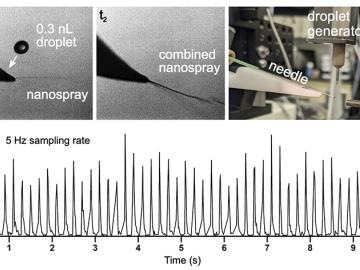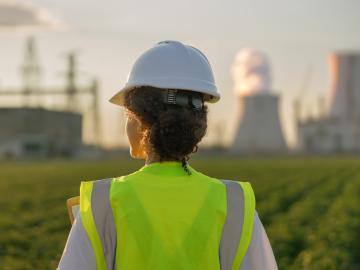Filter Results
Related Organization
- Biological and Environmental Systems Science Directorate
(23)
- Computing and Computational Sciences Directorate (35)
- Energy Science and Technology Directorate (217)
- Fusion and Fission Energy and Science Directorate
(21)
- Information Technology Services Directorate (2)
- Isotope Science and Enrichment Directorate (6)
- National Security Sciences Directorate (17)
- Neutron Sciences Directorate (11)
- Physical Sciences Directorate (128)
- User Facilities (27)
Researcher
- Venugopal K Varma
- Mahabir Bhandari
- Adam Aaron
- Alexander I Wiechert
- Benjamin Manard
- Charles D Ottinger
- Charles F Weber
- Costas Tsouris
- Gerald Tuskan
- Govindarajan Muralidharan
- Ilenne Del Valle Kessra
- Isaac Sikkema
- Joanna Mcfarlane
- Jonathan Willocks
- Joseph Olatt
- Kunal Mondal
- Mahim Mathur
- Matt Vick
- Mingyan Li
- Oscar Martinez
- Paul Abraham
- Rose Montgomery
- Sam Hollifield
- Sergey Smolentsev
- Steven J Zinkle
- Thomas R Muth
- Vandana Rallabandi
- Vilmos Kertesz
- Xiaohan Yang
- Yang Liu
- Yanli Wang
- Ying Yang
- Yutai Kato

High-gradient magnetic filtration (HGMF) is a non-destructive separation technique that captures magnetic constituents from a matrix containing other non-magnetic species. One characteristic that actinide metals share across much of the group is that they are magnetic.

V-Cr-Ti alloys have been proposed as candidate structural materials in fusion reactor blanket concepts with operation temperatures greater than that for reduced activation ferritic martensitic steels (RAFMs).

Detection of gene expression in plants is critical for understanding the molecular basis of plant physiology and plant responses to drought, stress, climate change, microbes, insects and other factors.

Fusion reactors need efficient systems to create tritium fuel and handle intense heat and radiation. Traditional liquid metal systems face challenges like high pressure losses and material breakdown in strong magnetic fields.

The traditional window installation process involves many steps. These are becoming even more complex with newer construction requirements such as installation of windows over exterior continuous insulation walls.

Real-time tracking and monitoring of radioactive/nuclear materials during transportation is a critical need to ensure safety and security. Current technologies rely on simple tagging, using sensors attached to transport containers, but they have limitations.

The invention provides on-line analysis of droplets for mass spectrometry.

The interface gasket for building envelope is designed to enhance the installation of windows and other objects into building openings.

The need for accurate temperature measurement in critical environments such as nuclear reactors is paramount for safety and efficiency.

